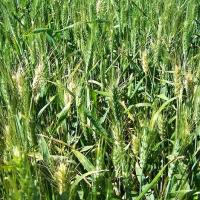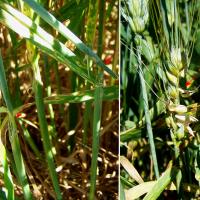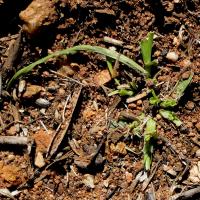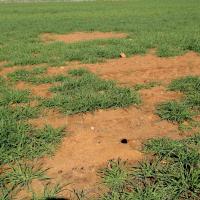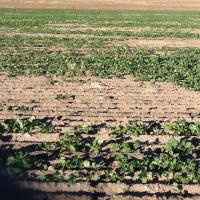Diagnosing mouse damage in crops
Mice are seasonal pests that can affect any crop. Usually they favour paddocks with high stubble retention.
What to look for
- Bare patches and chewed plants with mouse holes at plant establishment.
- White heads that are either scattered or in patches in spring with mouse holes nearby.
Paddock
- Poor germination and chewed young plants due to mice chewing seed and leaves.
- Stems gnawed just above the node causing them to die.
- Seed chewed in the head.
- Pods lopped and chewed along one side and seed eaten
Plant
What else could it be
| Condition | Similarities | Differences |
|---|---|---|
|
Insect damage
|
Bare patches of chewed seedling | Presence of grubs and insects |
| Diagnosing crown rot of cereals | Individual tiller death at head emergence | Mouse damage can be distinguished by small burrows in the affected area |
|
Birds and locusts
|
Chewed stems and heads | Mouse damage can be distinguished by small burrows in the affected area |
Where did it come from?

Wet conditions
- Mice are always present in crops in low numbers, but can increase rapidly under favourable conditions, including:
- Prolonged availability of high-quality feed;
- High crop yields and poor harvesting efficiency;
- Early autumn rains that produce early seed-set of winter weeds;
- Late spring or early summer rains that damage mature crops and produce a flush of summer weeds;
- Favourable burrowing conditions, such as cracking or light soils;
- Heavy crop residues.
Management strategies
- Use in-crop baiting when damage occurs.
- Hygiene recommenations to minimise breeding are:
- Minimise spilled grain or harvester grain loss in paddocks.
- Heavy grazing can help clean up high harvest grain losses, but sufficient ground cover should be left to minimise erosion potential.
- Clean up any concentrated spills of grain around field bins, augers and other grain storage.
- Remove or reduce cover, including plant material, rubbish and general clutter around buildings, silos and fodder storage.
- Paddock operations to reduce damage are:
- Control weeds and volunteers along fence lines, crop margins and channel banks in autumn and before seed-set to minimise sources of food and shelter.
- Sow as evenly and as early as possible for each crop, to achieve rapid establishment of strong plants. Do not dry sow.
- Slightly increase seeding rates and sow as deeply as possible for each crop if mouse numbers are elevated at seeding.
- Cross harrow or roll after sowing to ensure good seed coverage and the removal of sowing lines.
Economic and financial considerations
To assist in assessing the economic risk and financial costs associated with various treatment strategies go to MyEconomicTool
There may be other economic and financial implications that need to be considered when choosing a management option. These may include:
Pre-crop- Understand the potential yield losses associated with high mice populations.
- Assess the costs and benefits of taking preventative action.
- Compare the costs, benefits and risk of each management option against doing nothing.
- Consider risk and associated costs or savings of delaying treatment.
- Consider the potential risk of re-invasion and costs of further treatment.
- Ignore all previous treatment costs in assessing current management options.
- Aim to keep pressure on mouse numbers by managing grain and weed seed residues at harvest to limit costs associated with mouse damage in the following season.
View these economic considerations in more detail.
Further information
Where to go for expert help
Pest and Disease Information Service (PaDIS)
+61 (0)8 9368 3080
Page last updated: Wednesday, 18 August 2021 - 9:36am


